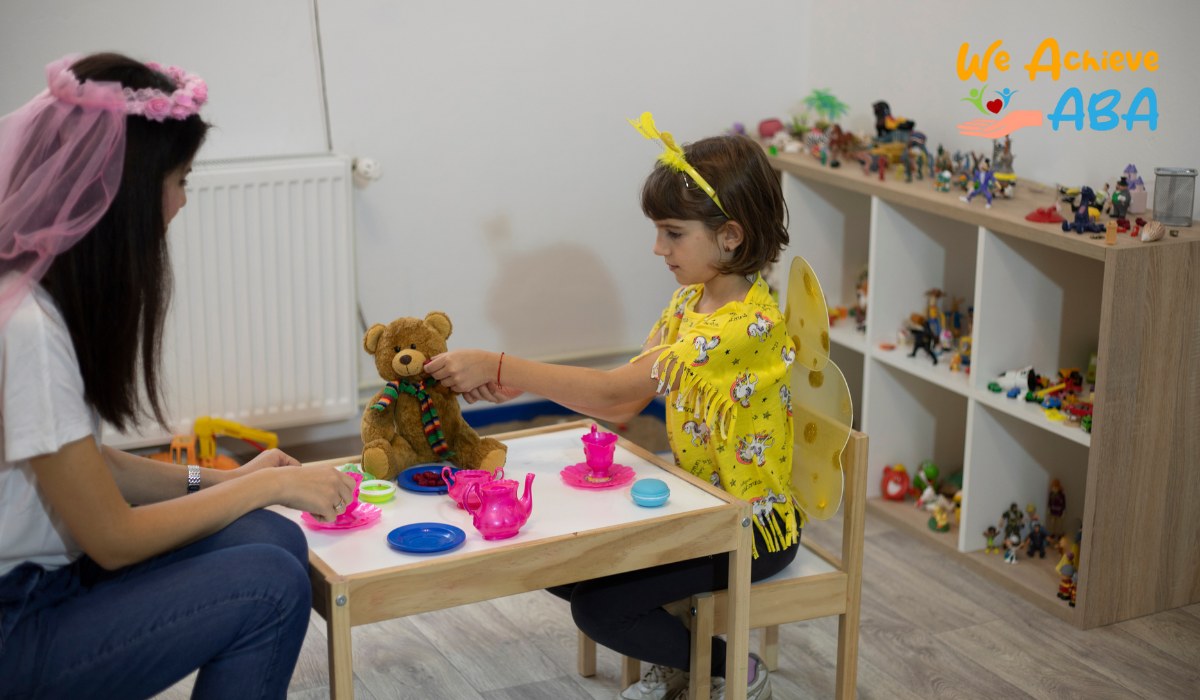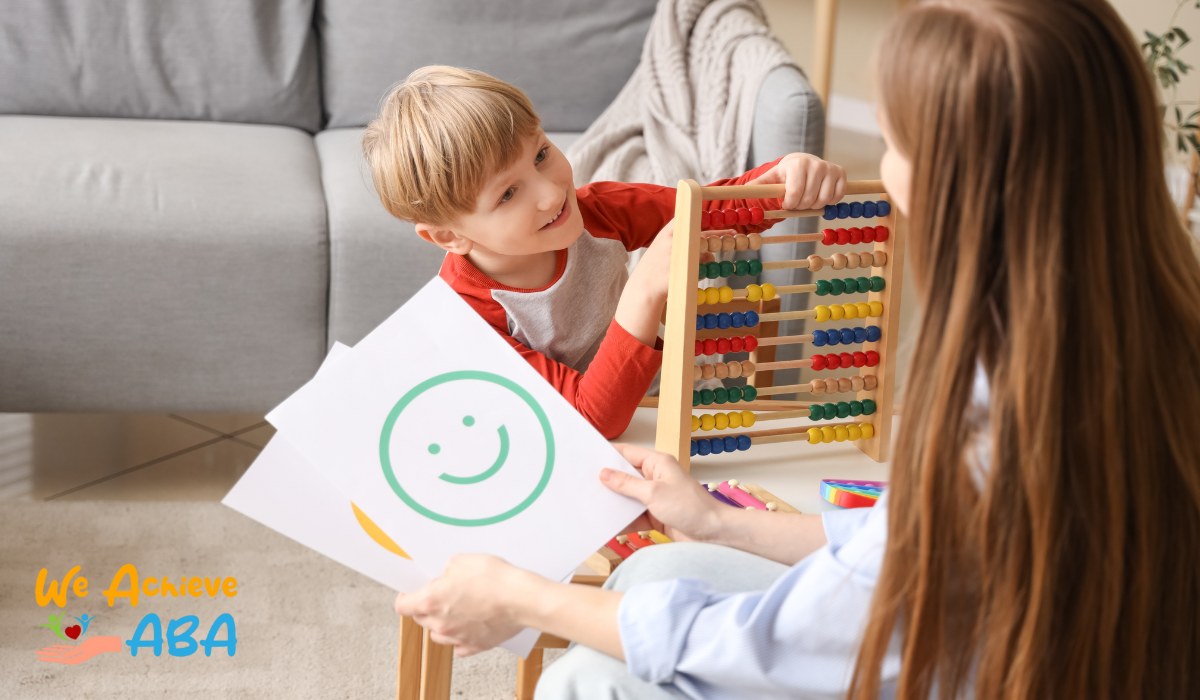Autism Diagnosis: Steps, Tips, and What Happens Next
Get guidance on autism diagnosis steps. Learn what to expect, tips for families, and next steps to support your child’s growth and care.
Key Points:
- The autism diagnosis process involves developmental screening, evaluation, and multidisciplinary assessments.
- Early diagnosis helps families access support, therapies, and education plans tailored to their child’s needs.
- Families can take proactive steps—from gathering records to understanding treatment options like ABA therapy—to build a path forward.
When parents first notice differences in their child’s development—perhaps in speech, play, or social interaction—it’s natural to wonder what those signs mean. An autism spectrum disorder (ASD) diagnosis can feel overwhelming at first, but it’s also a gateway to understanding and support.
Getting a diagnosis doesn’t define your child’s potential—it clarifies how they experience the world. This clarity allows you to plan the right interventions early on, helping your child develop communication, independence, and confidence.
Below is a complete, step-by-step guide to the autism diagnosis process, what to expect, and how to prepare for the next stages of your child’s journey.
Understanding Autism and Why Diagnosis Matters
Autism spectrum disorder is a neurodevelopmental condition that affects how a person communicates, interacts, and processes sensory information. Because it presents differently in every child, diagnosis requires careful observation and multiple assessments—not a single test.
Early identification is crucial. Studies show that children who receive support before age 5 often make stronger gains in communication, daily living, and social participation. More importantly, diagnosis helps families access school supports, therapies, and insurance-covered interventions such as Applied Behavior Analysis (ABA) therapy.
The Steps of an Autism Diagnosis
Getting a diagnosis is a process. It usually involves multiple stages and professionals who specialize in child development, such as pediatricians, psychologists, or neurologists. Understanding these steps helps you feel more prepared and confident throughout the journey.
1. Developmental Monitoring
This is the first layer of observation, usually done by parents, caregivers, and pediatricians. During routine checkups, doctors track developmental milestones—like babbling, eye contact, or pretend play.
If your child shows differences (such as limited social response or repetitive play patterns), the pediatrician may recommend further screening. Keep notes on your child’s behaviors, preferences, and responses during play—it helps professionals see a clearer picture of development.
2. Developmental Screening
A screening is a short test to determine whether your child might need further evaluation. Pediatricians often use standardized tools like the M-CHAT (Modified Checklist for Autism in Toddlers).
This screening doesn’t diagnose autism—it flags whether additional assessments are necessary. If the results suggest developmental differences, your doctor will refer you to a specialist team.
3. Comprehensive Diagnostic Evaluation
This stage involves a deeper assessment conducted by professionals trained in autism diagnosis. The team may include developmental pediatricians, child psychologists, speech-language pathologists, and occupational therapists.
A full evaluation may include:
- Direct observation of your child’s play, interaction, and communication.
- Standardized assessments such as the ADOS-2 (Autism Diagnostic Observation Schedule) or ADI-R (Autism Diagnostic Interview-Revised).
- Speech and language testing to identify expressive and receptive language strengths.
- Cognitive testing to assess learning, attention, and problem-solving.
- Parent interviews to gather developmental history, behaviors, and social milestones.
The process may take several sessions. Afterward, the team compiles results to confirm whether your child meets diagnostic criteria for ASD and where they fall on the spectrum.

What to Expect After the Diagnosis
Receiving an autism diagnosis can bring mixed emotions—relief, confusion, or even grief. It’s important to know that this is not the end of a path but the beginning of an informed one.
A clear diagnosis opens access to specialized services and school-based supports that can make a real difference in your child’s growth.
Here’s what typically follows after you receive the results:
- Written Report – You’ll receive a detailed evaluation describing your child’s strengths, challenges, and diagnostic findings. Keep copies for future reference.
- Recommendations for Therapy – The report will outline suggested interventions such as speech therapy, occupational therapy, and ABA therapy.
- Referrals for Services – Your provider may refer you to early intervention programs or local school services, depending on your child’s age.
- Parent Guidance – Professionals often schedule a feedback session to help you understand what the diagnosis means and how to proceed.
Tips for Families Preparing for Evaluation
Many parents feel uncertain about how to prepare or what to bring to an autism evaluation. A little preparation goes a long way in ensuring that the assessment accurately captures your child’s abilities and needs.
Before the appointment:
- Gather developmental records: Bring past medical reports, early intervention notes, and school observations.
- List your concerns: Write specific examples of behaviors that prompted your evaluation (e.g., limited eye contact, repetitive play, speech delays).
- Record videos at home: Short clips of your child playing, communicating, or engaging in daily routines can help professionals see behaviors that might not occur during the appointment.
- Bring comfort items: Familiar toys or snacks can help your child stay calm during testing.
During the process, be honest and detailed. Small observations—like how your child responds to names or transitions between activities—can be essential for accurate diagnosis.

Building a Care Plan: What Happens Next
Once your child is diagnosed, the next step is creating an individualized care plan. This plan focuses on addressing your child’s core challenges while strengthening communication, independence, and emotional regulation.
Key components of a comprehensive care plan:
Applied Behavior Analysis (ABA) Therapy
ABA is an evidence-based therapy that helps children develop skills through positive reinforcement. It focuses on communication, social interaction, and reducing challenging behaviors. A Board Certified Behavior Analyst (BCBA) designs a customized plan based on your child’s strengths and goals.
For example, if your child has difficulty requesting items, ABA therapy might break down the process into manageable steps—eye contact, gesture, word, or picture exchange—each reinforced positively.
Speech and Language Therapy
This therapy targets communication skills, from pronunciation and vocabulary to understanding social language. Speech therapists often collaborate with ABA professionals to reinforce language across settings.
Occupational Therapy (OT)
OT helps children improve fine motor skills, self-care routines, and sensory processing. Many children with autism benefit from sensory-based activities that improve attention and regulation.
Parent Training and Support
Parents play a vital role in implementing strategies at home. Many programs offer training sessions so families can reinforce progress through play, daily routines, and positive communication.

Practical Steps for Navigating Services
Understanding what to do after diagnosis can feel overwhelming. Here’s a structured roadmap for getting started and staying organized.
1. Access Early Intervention or School Services
If your child is under three, contact your local early intervention program. For older children, reach out to the school district’s special education department for evaluation under an IEP (Individualized Education Program).
2. Coordinate with a BCBA or ABA Provider
Find a reputable ABA therapy provider that creates personalized treatment plans. Ask about in-home, in-clinic, or community-based options depending on your family’s schedule.
3. Set Realistic Goals
Start small. Focus on functional goals like requesting help, following directions, or engaging in short play interactions. Over time, these goals evolve into broader developmental achievements.
4. Stay Involved
Regularly attend therapy meetings and progress reviews. Consistent communication between parents and providers ensures that interventions stay aligned with your child’s evolving needs.
Common Questions Parents Ask
Before we wrap up, it’s natural for parents to have lingering questions about what comes next. Understanding the diagnostic process and what to expect afterward can ease uncertainty and help you make confident choices for your child’s growth.
Here are some of the most common questions families ask when navigating an autism diagnosis.
How long does the autism diagnosis process take?
Depending on waitlists and availability, full evaluations can take from several weeks to a few months. Once complete, you’ll receive a detailed report with recommendations.
Can autism be misdiagnosed?
While autism shares traits with other developmental conditions (like ADHD or sensory processing differences), a multidisciplinary team reduces the risk of misdiagnosis. Accurate diagnosis depends on observing consistent behaviors across multiple settings.
Will my child outgrow autism?
Autism is lifelong, but early and consistent therapy can significantly improve adaptive skills, communication, and independence. Many children go on to thrive academically and socially with the right support.
What therapies should we start first?
Most children benefit from beginning ABA therapy soon after diagnosis. From there, specialists may recommend speech and occupational therapies to target additional needs.

Moving Forward with Confidence
An autism diagnosis doesn’t change who your child is—it gives you the roadmap to help them thrive. Every step, from evaluation to therapy, is about understanding how your child learns, communicates, and connects.
Applied Behavior Analysis (ABA) therapy remains one of the most effective, research-backed ways to build meaningful skills for children on the spectrum. By focusing on positive reinforcement, consistency, and family involvement, it turns challenges into achievable milestones.
We Achieve ABA specializes in personalized, evidence-based ABA therapy programs that empower children to reach their fullest potential—one step at a time. With compassionate care and structured guidance, families find hope, progress, and clarity.
If you’re ready to take the next step toward growth and support, contact us for ABA therapy in North Carolina, Texas, or Illinois. Let’s work together to create a plan that celebrates your child’s strengths and supports lasting development.
More Resources
Expert Clinicians
Our Team at We Achieve ABA consists of highly trained, licensed, and insured professionals who are not only knowledgeable in autism care but also compassionate, culturally sansitive, and reliably dpendable.

